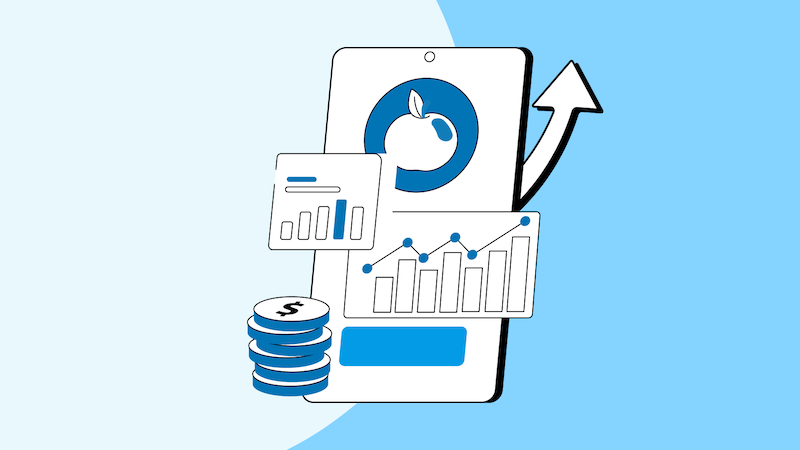Social media has become an integral part of our daily lives, shaping how we communicate, consume information, and make purchasing decisions. With billions of users across various platforms, social media provides a treasure trove of data waiting to be explored. In this article, we delve into the world of social media insights, exploring what they are, how businesses can leverage them, and the tools available for gathering and interpreting this valuable data.
Introduction to Social Media Insights

1. What are social media insights?
Social media insights refer to the data and analytics generated from the activities and interactions of users on social media platforms. These insights provide valuable information about audience behavior, content performance, and market trends.
2. Importance of social media insights for businesses
In today’s digital age, understanding your audience and their preferences is crucial for business success. Social insights offer businesses invaluable data that can inform their marketing strategies, improve customer engagement, and drive growth.
Understanding Social Media Analytics
1. Types of social media analytics
Social media analytics can be categorized into various types, including:
- Descriptive analytics: Provides an overview of past performance metrics.
- Diagnostic analytics: Helps identify the reasons behind certain trends or patterns.
- Predictive analytics: Forecasts future trends based on historical data.
- Prescriptive analytics: Offers recommendations for actions based on insights.
2. Key metrics to track
When analyzing social media data, businesses should pay attention to key metrics such as:
- Engagement rate
- Reach and impressions
- Click-through rate
- Conversion rate
- Audience demographics
Utilizing Social Media Insights for Business Growth
1. Audience demographics analysis
By analyzing demographic data such as age, gender, location, and interests, businesses can better understand their target audience and tailor their marketing efforts accordingly.
2. Content performance evaluation
Social insights provide valuable feedback on the performance of content posted by businesses. Analyzing metrics such as likes, shares, and comments can help businesses identify what type of content resonates with their audience.
3. Competitor benchmarking
Studying the social media activities of competitors can provide valuable insights into industry trends, audience preferences, and successful marketing strategies. Businesses can use this information to benchmark their own performance and identify areas for improvement.
Social Media Insights Tools
There are various tools available for gathering and analyzing social insights, including:
- Google Analytics: Provides in-depth data on website traffic, including social media referrals.
- Facebook Insights: Offers analytics for Facebook Pages, including audience demographics and post performance.
- Twitter Analytics: Provides insights into tweet performance, audience engagement, and follower demographics.
- Instagram Insights: Offers analytics for Instagram business accounts, including audience demographics and post reach.
- LinkedIn Analytics: Provides insights into company page performance, audience demographics, and engagement metrics.
Interpreting Social Media Data
1. Identifying trends and patterns
Social media data can reveal valuable trends and patterns that businesses can capitalize on. By identifying what content performs best and when, businesses can optimize their social media strategy for maximum impact.
2. Making data-driven decisions
Instead of relying on guesswork or intuition, businesses can use social insights to make informed, data-driven decisions. Whether it’s deciding on the best time to post or determining which content to prioritize, data-driven decision-making can lead to more successful outcomes.
Enhancing Social Media Strategy with Insights
1. Tailoring content to audience preferences
By analyzing social insights, businesses can gain a deeper understanding of their audience’s preferences and interests. This allows them to create content that resonates with their target audience, leading to higher engagement and conversion rates.
2. Optimizing posting times
Social insights can help businesses identify the optimal times to post content for maximum visibility and engagement. By analyzing when their audience is most active, businesses can schedule posts accordingly to reach the widest audience possible.
3. Adapting strategies based on insights
The beauty of social insights is that they provide real-time feedback on the effectiveness of marketing strategies. Businesses can use this feedback to iterate and refine their strategies, ensuring they stay relevant and effective in an ever-changing landscape.
Overcoming Challenges
1. Data accuracy and reliability
One of the challenges businesses face when dealing with social insights is ensuring the accuracy and reliability of the data. With so much noise and clutter on social media, it can be difficult to filter out the relevant information and make sense of it.
2. Keeping up with algorithm changes
Social media platforms frequently update their algorithms, which can affect how content is distributed and displayed to users. Businesses need to stay informed about these changes and adjust their strategies accordingly to maintain visibility and engagement.
3. Interpreting complex data sets
Social media data can be complex and overwhelming, especially for businesses without a background in analytics. It’s essential to have the necessary skills and tools to interpret the data accurately and derive actionable insights from it.
Future Trends
1. AI and machine learning advancements
As technology continues to evolve, we can expect to see advancements in AI and machine learning algorithms for social media analytics. These tools will enable businesses to automate data analysis, identify patterns, and make predictions with greater accuracy and efficiency.
2. Predictive analytics for social media
Predictive analytics holds great promise for the future of social media marketing. By analyzing historical data and trends, businesses can anticipate future outcomes and tailor their strategies accordingly, leading to more targeted and effective campaigns.
Conclusion
In conclusion, social media insights are a valuable resource for businesses looking to gain a competitive edge in today’s digital landscape. By leveraging data and analytics, businesses can better understand their audience, refine their marketing strategies, and drive growth. With the right tools and approach, social media insights can unlock endless opportunities for success.
Ready to take your social media strategy to the next level? Request a demo from AIM Technologies today and discover how our advanced analytics platform can help you harness the power of social media insights to propel your business forward.
FAQs
How often should businesses analyze their social media insights?
- It’s advisable for businesses to analyze their social media insights regularly, at least once a month, to track performance and make informed decisions.
Are there any free tools available for gathering social media insights?
- Yes, many social media platforms offer built-in analytics tools for businesses to track their performance, such as Facebook Insights and Twitter Analytics.
How can businesses ensure the accuracy of their social media data?
- Businesses can ensure the accuracy of their social media data by cross-referencing information from multiple sources and using reputable analytics tools.
What should businesses do if they encounter challenges in interpreting their social media insights?
- If businesses encounter challenges in interpreting their social media insights, they can seek assistance from analytics experts or invest in training for their team members.
What role do social media insights play in ROI measurement for businesses?
- Social media insights play a crucial role in ROI measurement for businesses by providing valuable data on engagement, conversion rates, and customer acquisition costs, allowing businesses to evaluate the effectiveness of their social media efforts.




